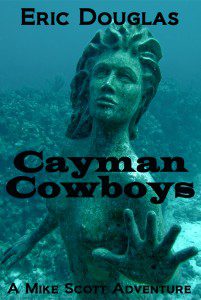 In 1998, I left West Virginia headed for California. I remember thinking the place would be full of health food restaurants and gyms, along with high-end stores. I remember wondering if they would serve iced tea in the restaurants.
In 1998, I left West Virginia headed for California. I remember thinking the place would be full of health food restaurants and gyms, along with high-end stores. I remember wondering if they would serve iced tea in the restaurants.
I know, I know, I sound really naïve. Believe it or not, I had been out of the state and had even traveled internationally. But those were my perceptions of what “California” was. That’s what we see on television and in the movies. We only hear about beautiful people doing beautiful things. For the record, there are plenty of fast food places, including an ironically named Fat Burger, and lots of not-so-beautiful people.
A few years later, I made my first trip to South Africa. Most of what I’d seen in the news were the shanty towns and the slums with dirt streets. Intellectually I knew there were cities, but it was still a surprise to see everyday people going about their everyday lives in suburbs and cities—both black and white. And both races were working side by side. Apartheid had ended 10 years before.
What I learned from these experiences (and dozens of others) is we what see shapes our perceptions. If all we see is one side of the story, we don’t even know what we don’t know. Recently, I learned about a really interesting website called Looking at Appalachia. It’s a crowd-sourced photo project (that has recently expanded to include audio, video and writing) by Roger May that takes on the perceptions of Appalachia and what is called “poverty porn.’ Poverty porn are those cheap, salacious images that are trotted out every so often to represent the “real’ West Virginia and Appalachia. May grew up in Chattaroy, WV and now lives in Raleigh, NC. This project is breaking down misperceptions and has been exhibited all over, even while it continues to expand.
Just last week, I heard about a similar project called West Virginia Point of View. It’s a collection of photos taken from Instagram. Chris Hodge, who developed it, explains on the site that photos are pulled regularly from the photo service, but then a human curates the photos and decides what to display. This is done to avoid privacy issues. The photos represent real people doing real things; going to baseball games, concerts and whatever else they get into. There aren’t “gritty black and white photos.” Unless, of course, someone uses an Instagram filter.
Poverty and despair are everywhere in the world (including California). But those things don’t represent a complete picture of any place. The trick is to not allow outsiders to dictate that public perception.

 for divers, by divers” and it does not disappoint. The entire resort is oriented toward making it convenient to scuba dive, either off one of their boats or in unlimited shore diving for guests.
for divers, by divers” and it does not disappoint. The entire resort is oriented toward making it convenient to scuba dive, either off one of their boats or in unlimited shore diving for guests.
